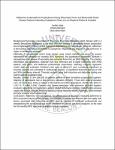| dc.description.abstract | Background:Secondary prevention of Rheumatic fever and Rheumatic Heart Disease with 3-4 weekly Benzathine prophylaxis is the most effective strategy in preventing disease progression and complications. Efficacy of this regimen is dependent on its rational use. However, adherence to Benzathine prophylaxis worldwide is suboptimal. Magnitude and impact of poor adherence is higher in developing countries.
Methods: A retrospective cohort study design using mixed methods was done. To acquire information on adherence to monthly BPG injections, the quantitative component involved a retrospective chart review of secondary data extracted from the Lira RHD Registry. The primary information was qualitative, obtained from key informant and in-depth interviews with RHD patients, care givers, and healthcare professionals respectively. Utilizing a logistic regression model, data was evaluated. Predictors that were at alpha=0.2 were considered significant at bivariate analysis and submitted to multivariate analysis. A significant threshold was set at 0.05 and 95% confidence interval. Thematic analysis using both inductive and deductive coding was used to analyze qualitative data.
Results: Overall, 57.8% (89/154) of patients adhered to their benzathine prophylactic regimen. Majority of participants had at least primary education (84/153). Those with tertiary education were 2.6 times more likely to adhere to Benzathine penicillin prophylaxis. (AOR 2.69, 95% CI: 1.00-7.3, P value 0.049). Demand side factors associated with adherence included logistics involved, suboptimal communication, patient related factors and condition related factors whereas supply side factors included medicine stockout, human resource related challenges, costs involved and poor provider client relationship.
Conclusion: Adherence was sub-optimal. To address some of the issues impacting adherence to BPG prophylaxis among these patients, it is necessary to address the demand side and supply side factors associated with adherence to BPG, such as training of healthcare professionals and strengthening the sensitization and health education of patients and their caregivers on the need for the monthly BPG injections in relation to their condition. | en_US |

